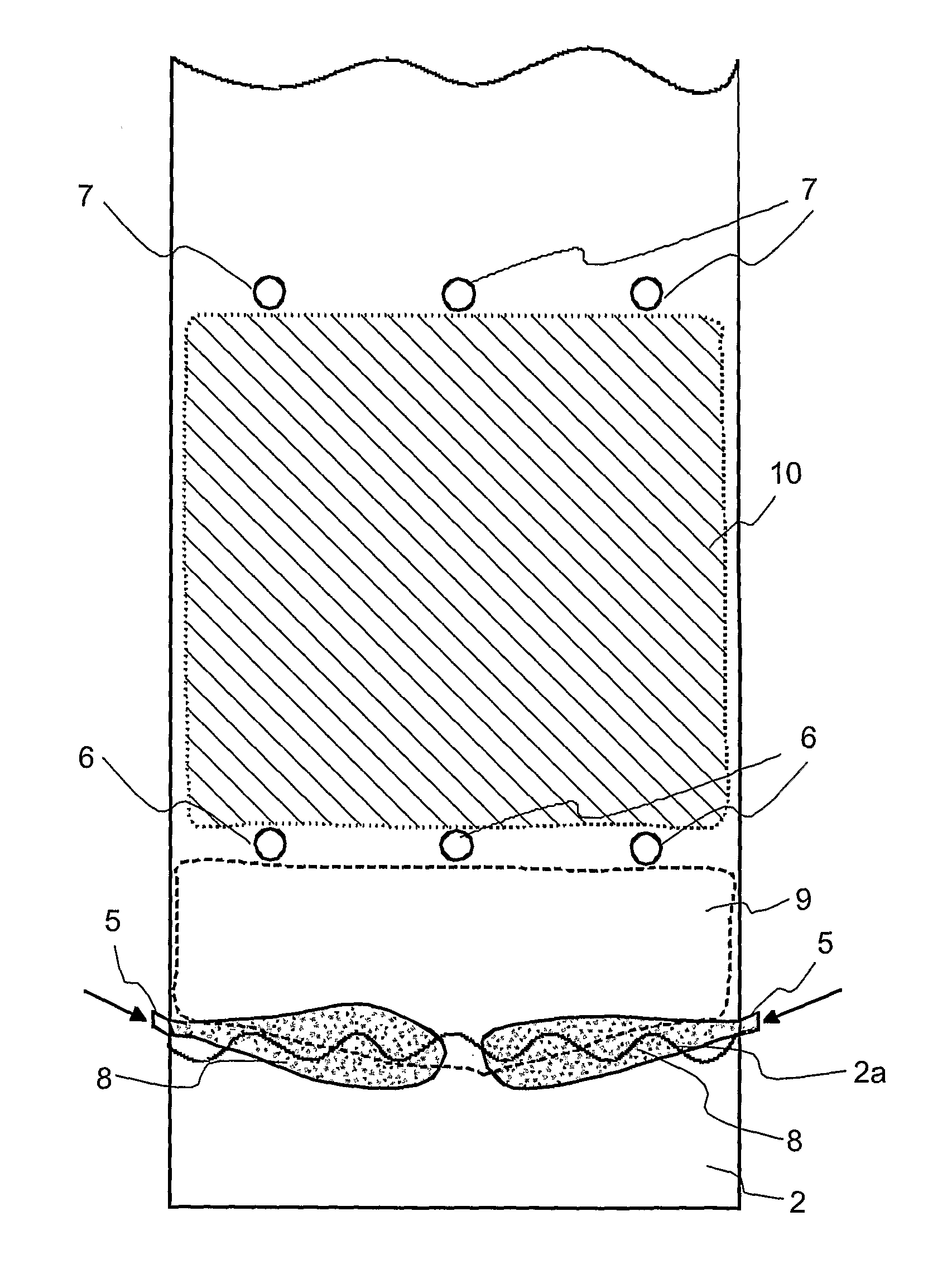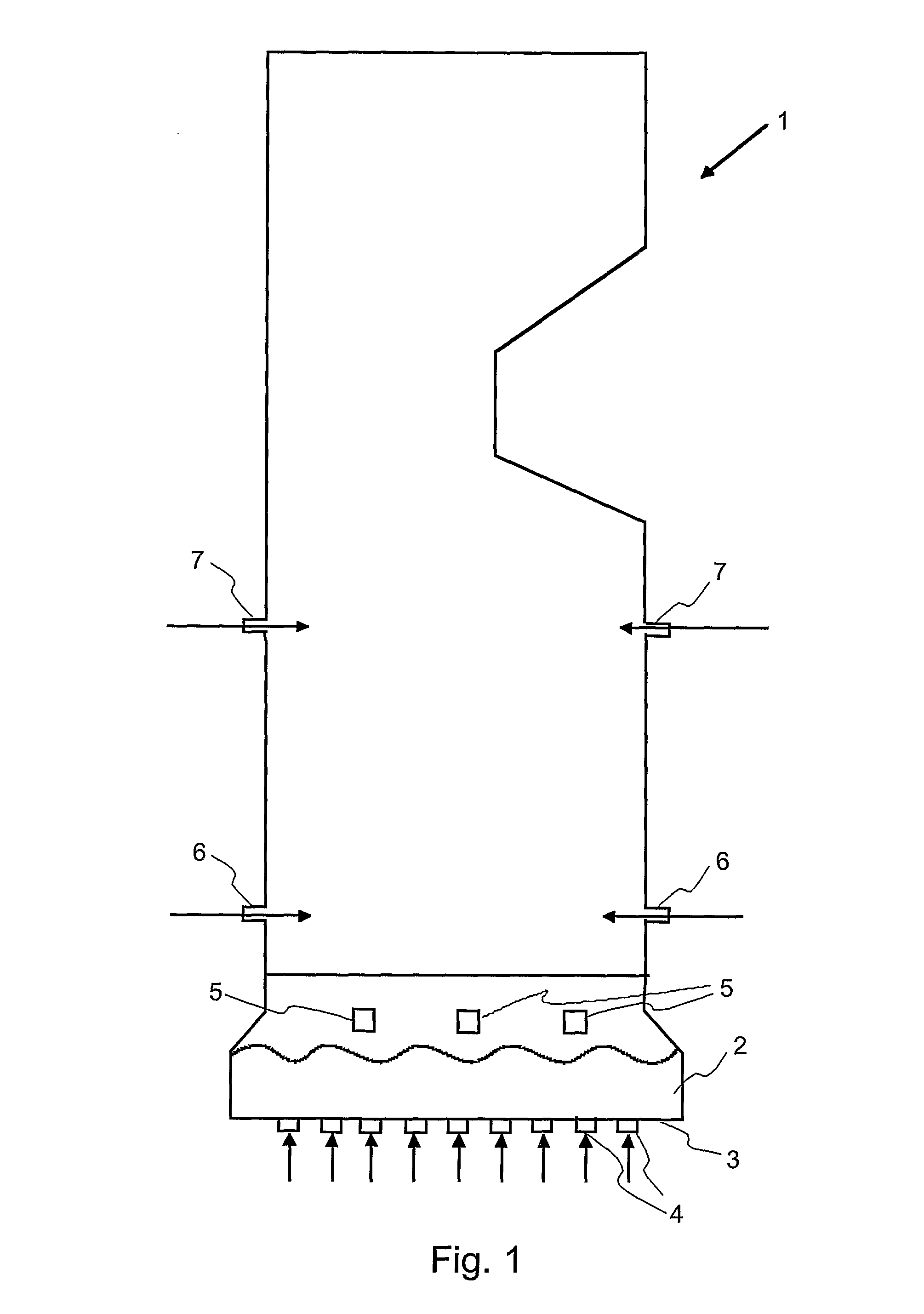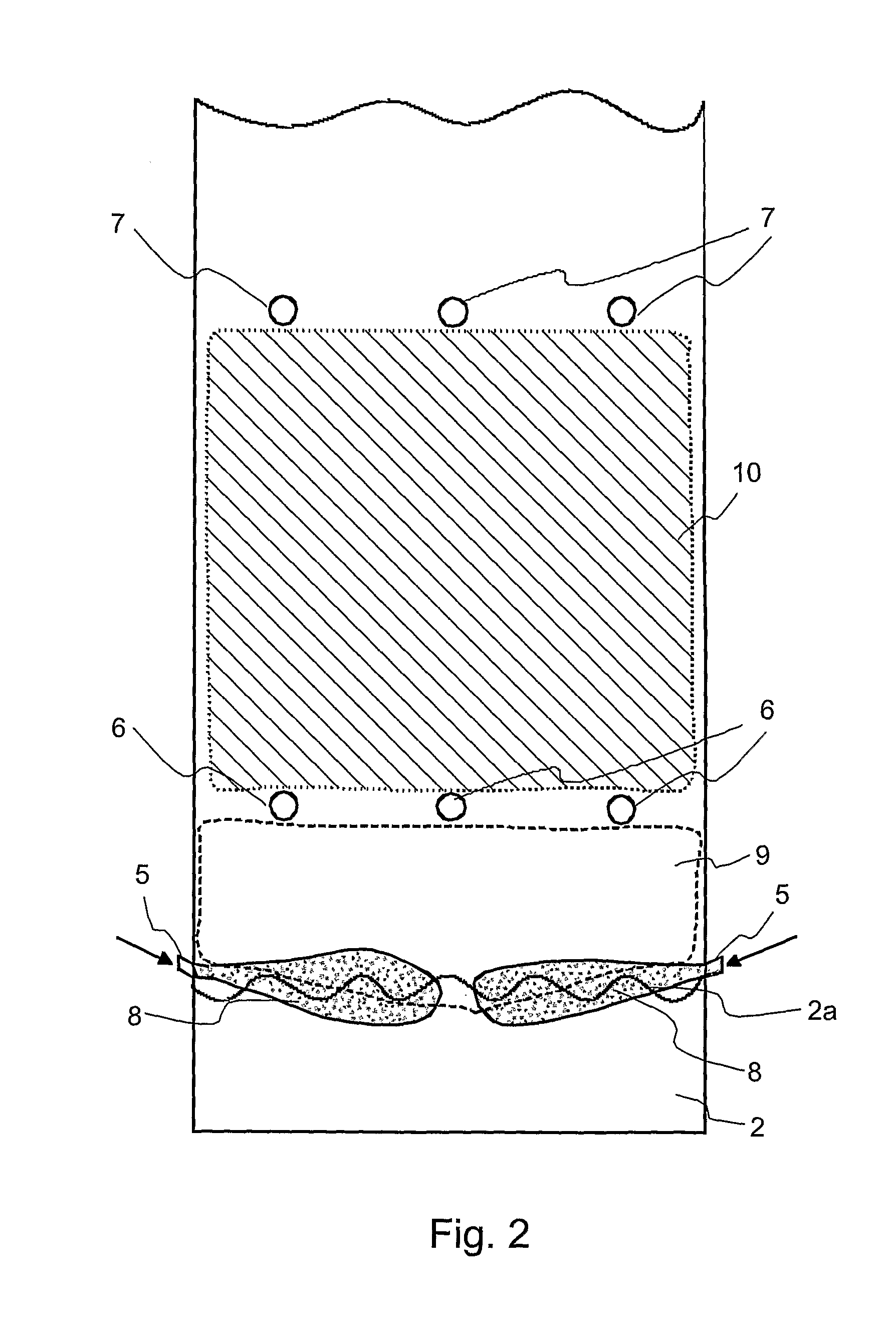Method For Reducing Nitrogen Oxide Emissions of a Bubbling Fluidized Bed Boiler and an Air Distribution System of a Bubbling Fluidized Bed Boiler
a technology of bubbling fluidized bed and boiler, which is applied in the direction of combustion types, lighting and heating apparatus, combustion processes, etc., can solve the problems of increasing the amount of flue gas in the boiler, the method is not efficient enough for getting nitrogen oxide, and the fuel is almost impossible to create fuel combustion conditions. to achieve the effect of reducing nitrogen oxide emissions
- Summary
- Abstract
- Description
- Claims
- Application Information
AI Technical Summary
Benefits of technology
Problems solved by technology
Method used
Image
Examples
Embodiment Construction
[0032]FIG. 1 shows a side view of a furnace of a bubbling fluidized bed boiler 1. There is a fluidized bed 2 composed of bed material on the bottom of the furnace. Fluidizing gas is supplied to the furnace 1 through nozzles 4 arranged on its bottom 3, which gas fluidizes the bed material. The fluidizing gas can be solely air, or it may be a mixture of air and recirculating gas. The fuel is supplied to the fluidized bed 2 from fuel supply means 5 arranged above the surface of the fluidized bed and placed substantially on a mutually same level. In the figure there are three fuel feeding means, but their number may vary depending on the size of the furnace or other parameters of the boiler. Fuel feeding means can also be arranged on the opposite side wall (not shown) of the furnace substantially on the same level with the fuel feeding means arranged on the side wall, as shown in the figure. They can also be placed on the front and / or back walls of the furnace. The fuel is fed to the fl...
PUM
 Login to View More
Login to View More Abstract
Description
Claims
Application Information
 Login to View More
Login to View More - R&D
- Intellectual Property
- Life Sciences
- Materials
- Tech Scout
- Unparalleled Data Quality
- Higher Quality Content
- 60% Fewer Hallucinations
Browse by: Latest US Patents, China's latest patents, Technical Efficacy Thesaurus, Application Domain, Technology Topic, Popular Technical Reports.
© 2025 PatSnap. All rights reserved.Legal|Privacy policy|Modern Slavery Act Transparency Statement|Sitemap|About US| Contact US: help@patsnap.com



